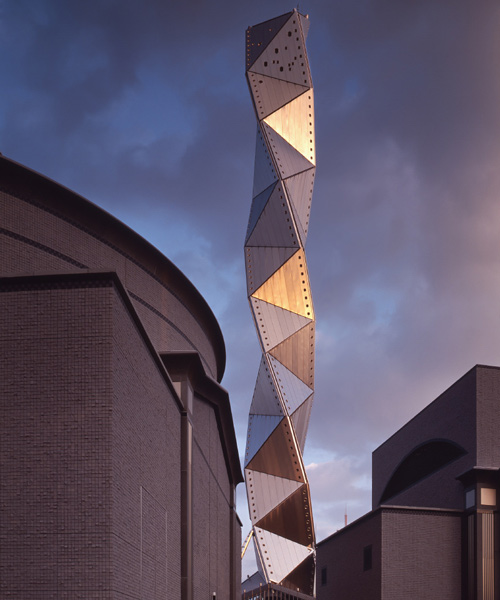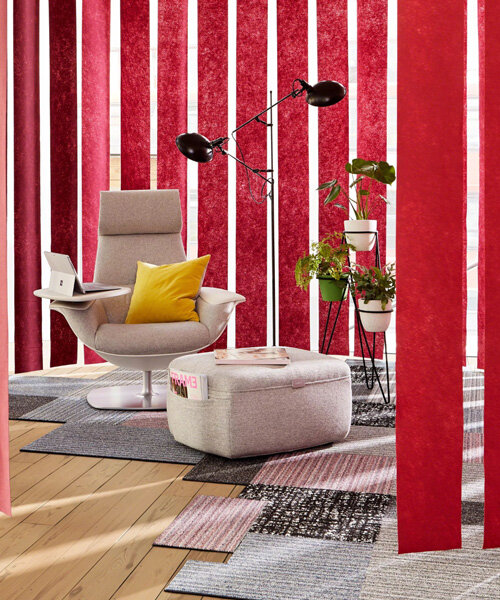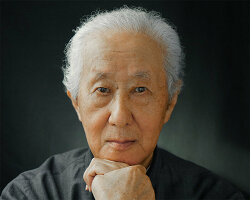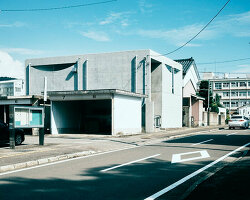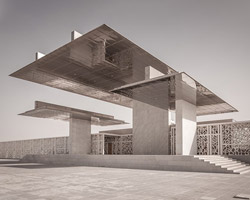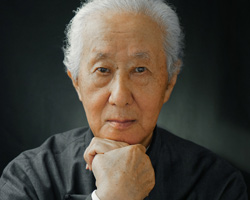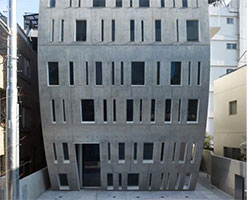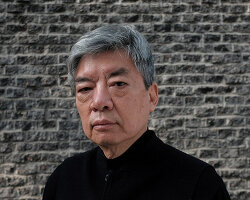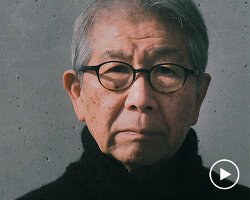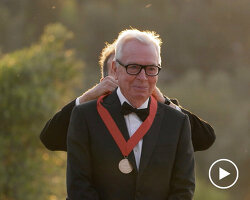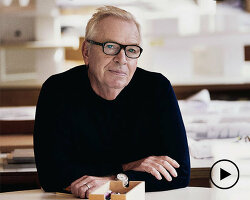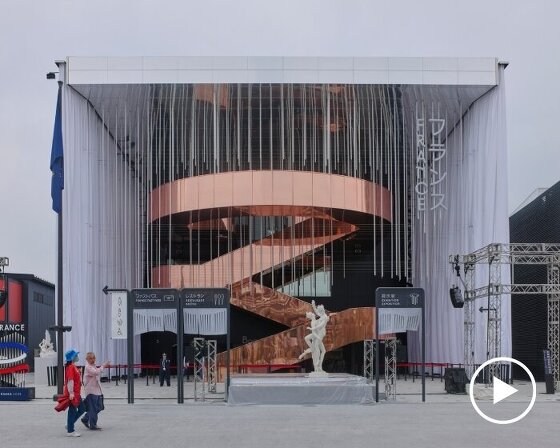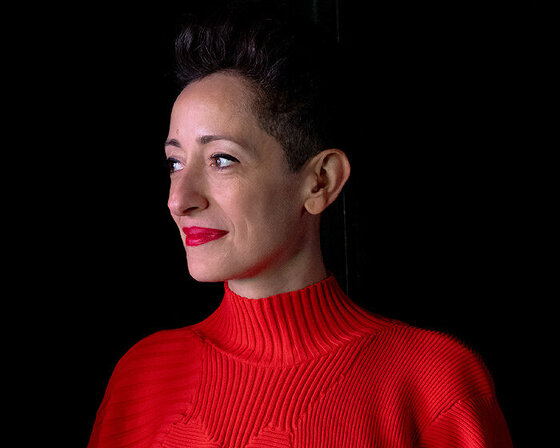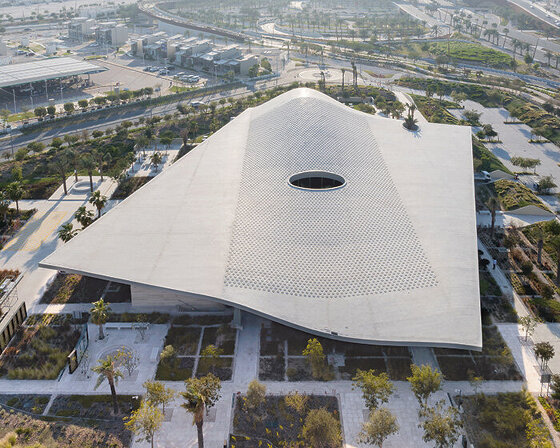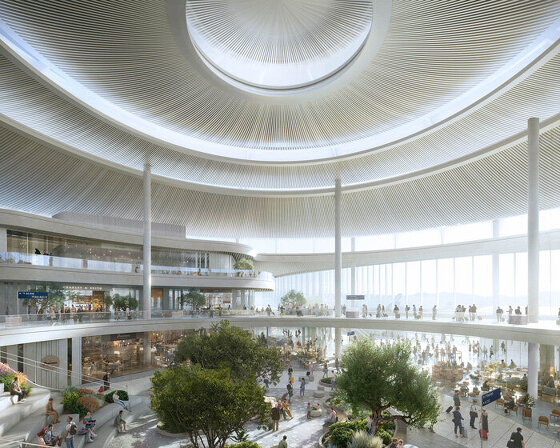the 2019 pritzker prize has been awarded to arata isozaki, the japanese architect, city planner and theorist. isozaki graduated from the university of tokyo in 1954, and began his career with an apprenticeship under 1987 pritzker laureate kenzo tange. he established arata isozaki & associates in 1963, after the allied occupation when japan had regained its sovereignty and was seeking physical rebuilding amidst political, economic and cultural uncertainty from the decimation of WWII. ‘in order to find the most appropriate way to solve these problems, I could not dwell upon a single style,’ isozaki explains. ‘change became constant. paradoxically, this came to be my own style.’
below, courtesy of the pritzker architecture prize, we take a closer look at ten projects that have defined the japanese architect’s career, starting with one of isozaki’s first commissions.
ōita prefectural library, ōita, japan (1962-66)
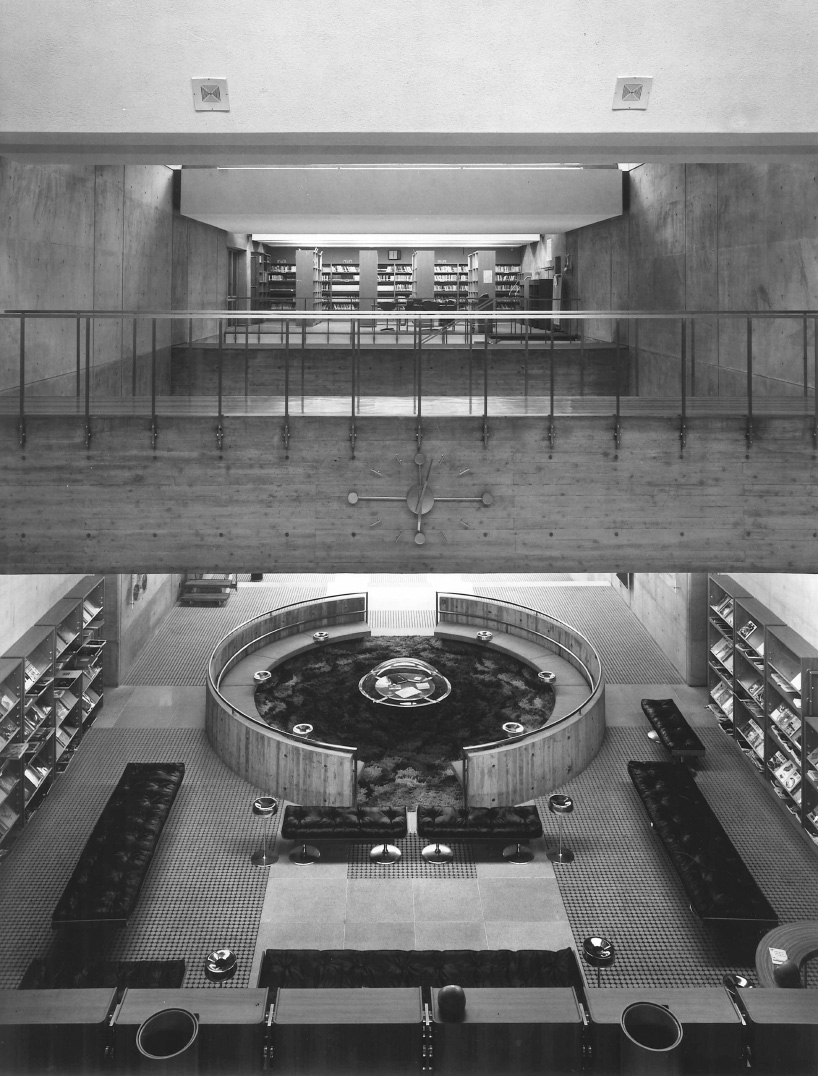
photo courtesy of yasuhiro ishimoto (also main image)
isozaki’s early career began with the postwar rebuilding of japan in his hometown of ōita on the island of kyushu. ōita prefectural library (renamed ōita art plaza) was one of the architect’s first commissions and part of a larger plan that emphasized ‘growing architecture,’ his theory that city planning should never remain static, but be intended for growth and evolution. an analogy with the human body was an inspiration for the organization of the building, which was realized mainly in exposed concrete and gives way to environments of lightness and darkness through skylights and windows.
kitakyushu central library, fukuoka, japan (1973-74)

photo courtesy of FUJITSUKA mitsumasa
the kitakyushu central library was inspired by étienne-louis boullée’s proposed design for the french national library (1785). izosaki realized a modern interpretation of the neoclassical vaulted ceilings through precast concrete. the building’s two large barrel vaults, which run parallel prior to curving separately, contrast with the rectangular windows that line the exterior.
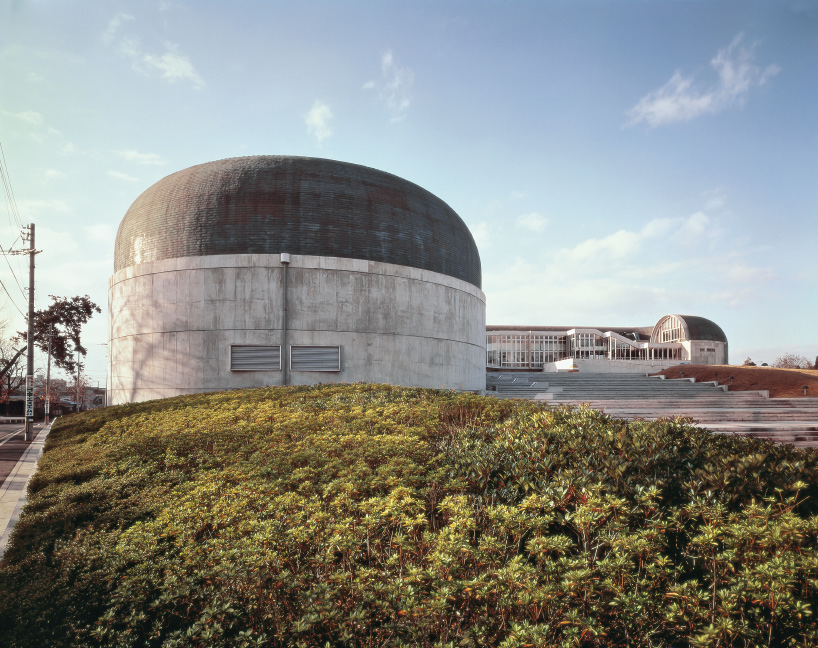
photo courtesy of yasuhiro ishimoto
the museum of contemporary art, los angeles, USA (1981-86)
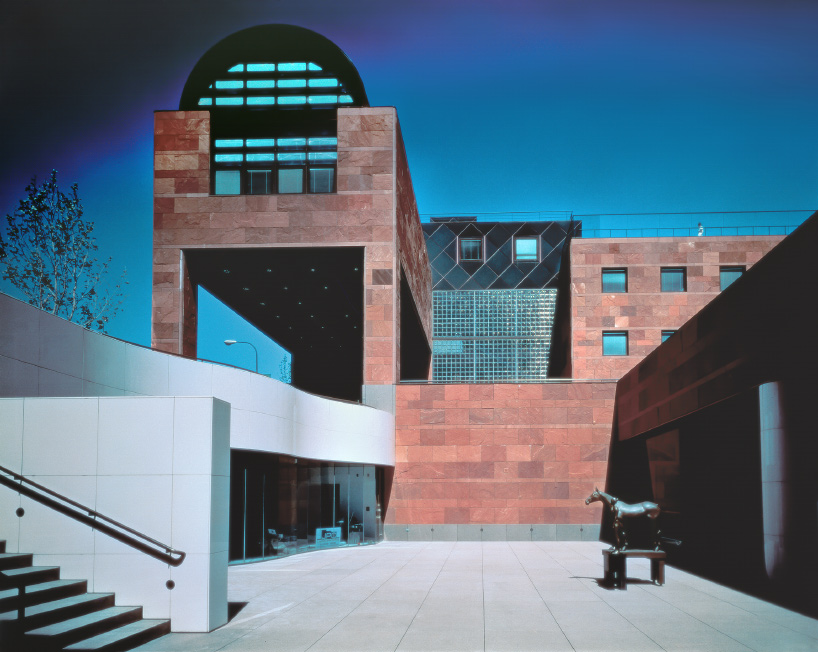
photo courtesy of yasuhiro ishimoto
the museum of contemporary art, los angeles was the architect’s first international commission outside of his native japan. faced with a challenging site, the sunken red sandstone building is in purposeful contrast to the surrounding area’s high-rise buildings. the barrel-vaulted library and copper-clad pyramids are part of the three stories that are above ground, while visitors must descend downstairs to the underground galleries that comprise four subterranean floors.
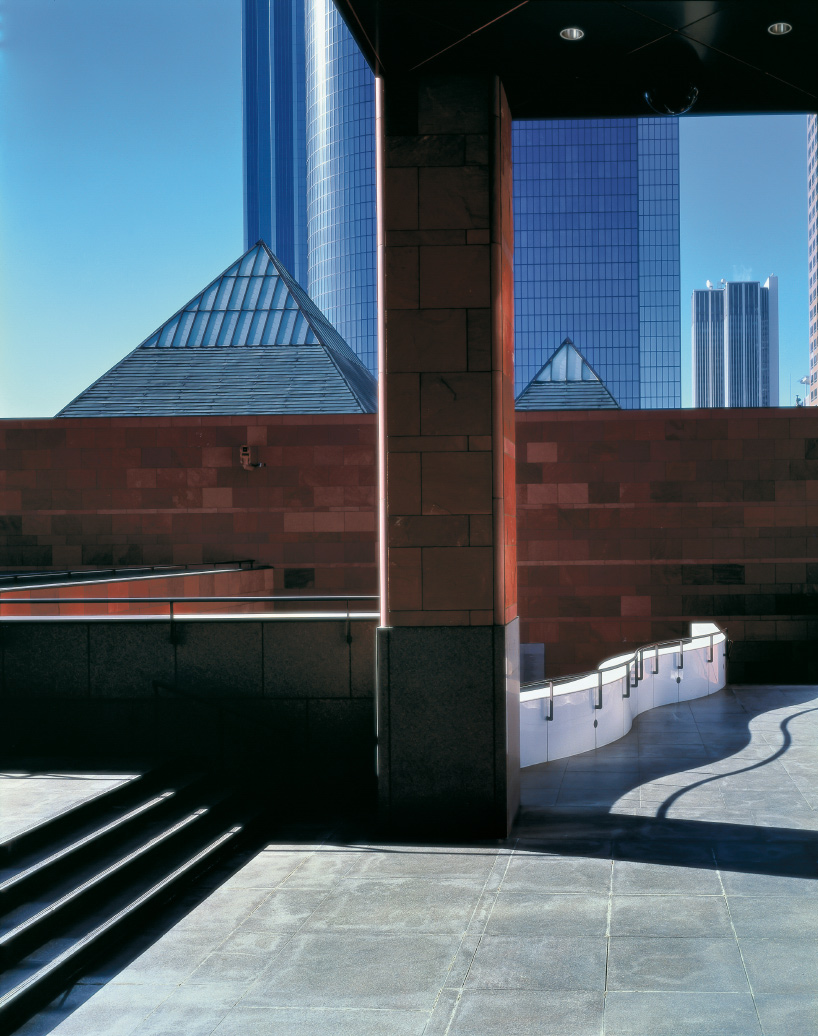
photo courtesy of yasuhiro ishimoto
art tower mito, ibaraki, japan (1986-90)
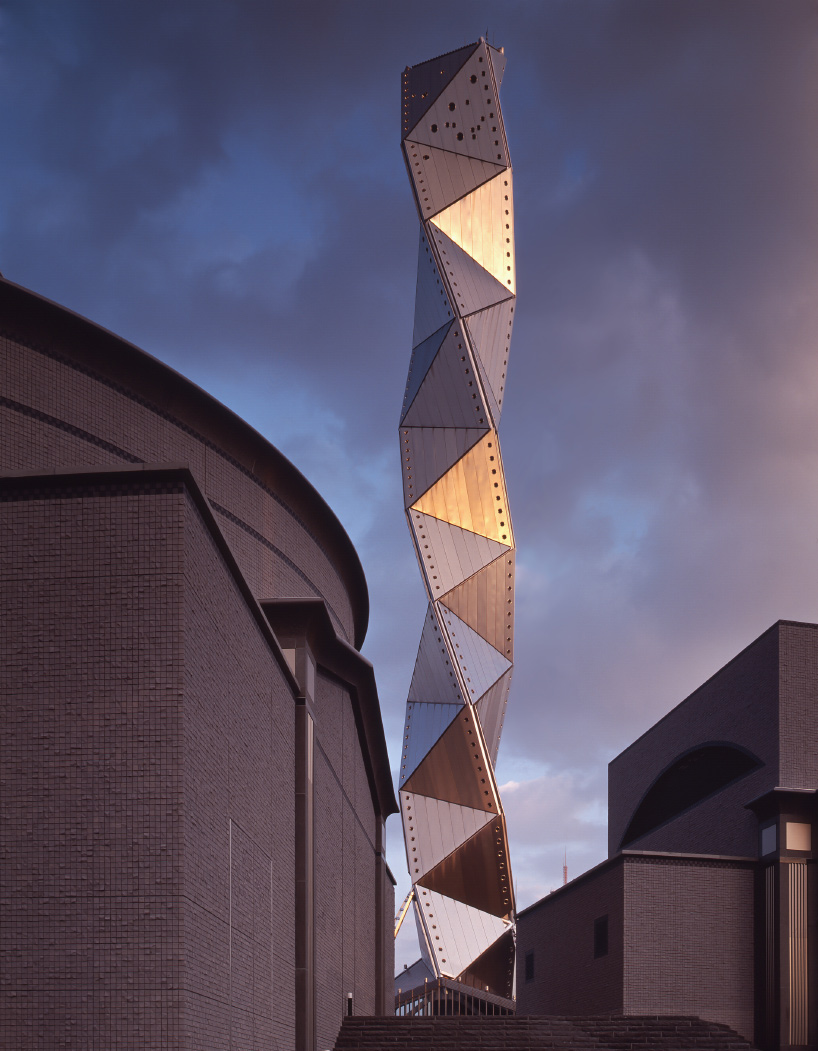
photo courtesy of yasuhiro ishimoto
commissioned to celebrate the centennial of mito, art tower mito was built as a cultural complex consisting of a theater, performance hall and contemporary art gallery. the iconic tetrahelix tower was inspired by constantin brancusi’s endless column (1938), and is comprised of fifty-six triangular panels in varying orientations.
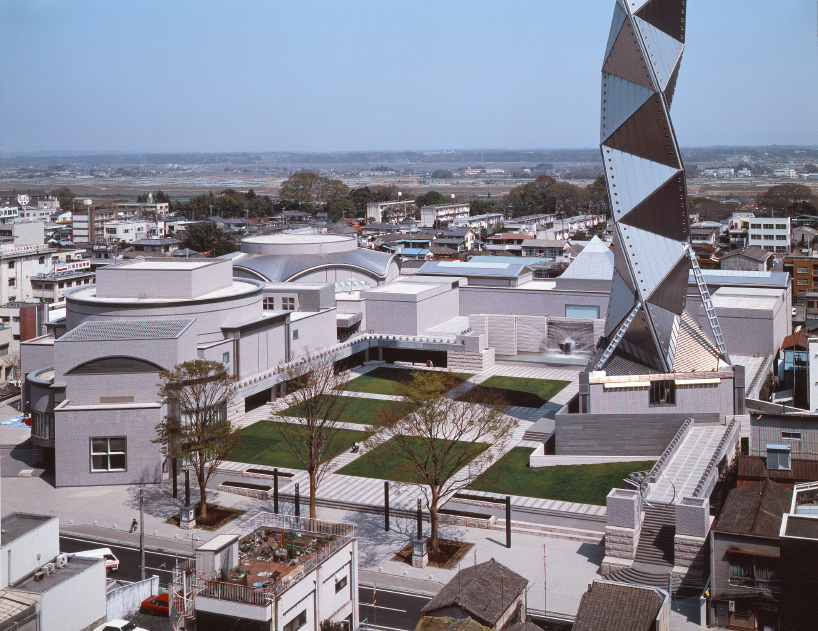
photo courtesy of yasuhiro ishimoto
domus: la casa del hombre, a coruña, spain (1993-1995)
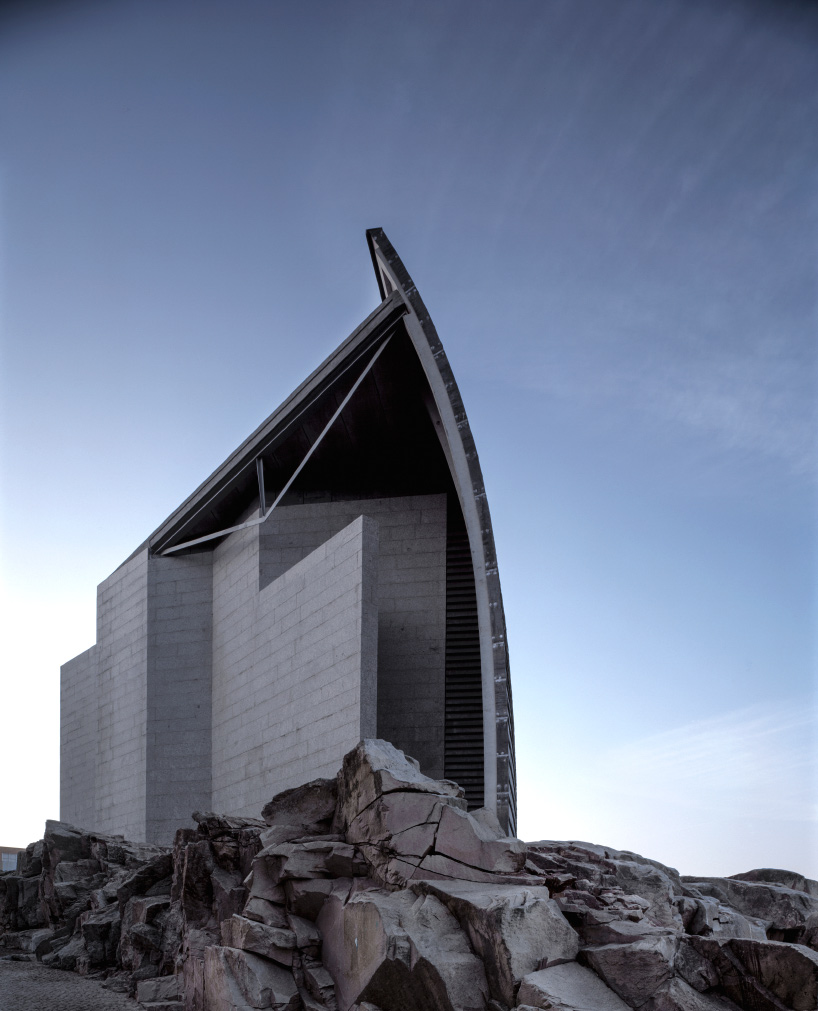
photo courtesy of hisao suzuki
this interactive science museum, dedicated to the exploration of humankind, sits overlooking orzan bay on a site that was once a quarry. the seaside-facing exterior forms a curved protective wall, resembling a windsail or a shell, that is clad in slate panels. the opposite exterior wall, composed of local granite, zig-zags similarly to a folding screen.
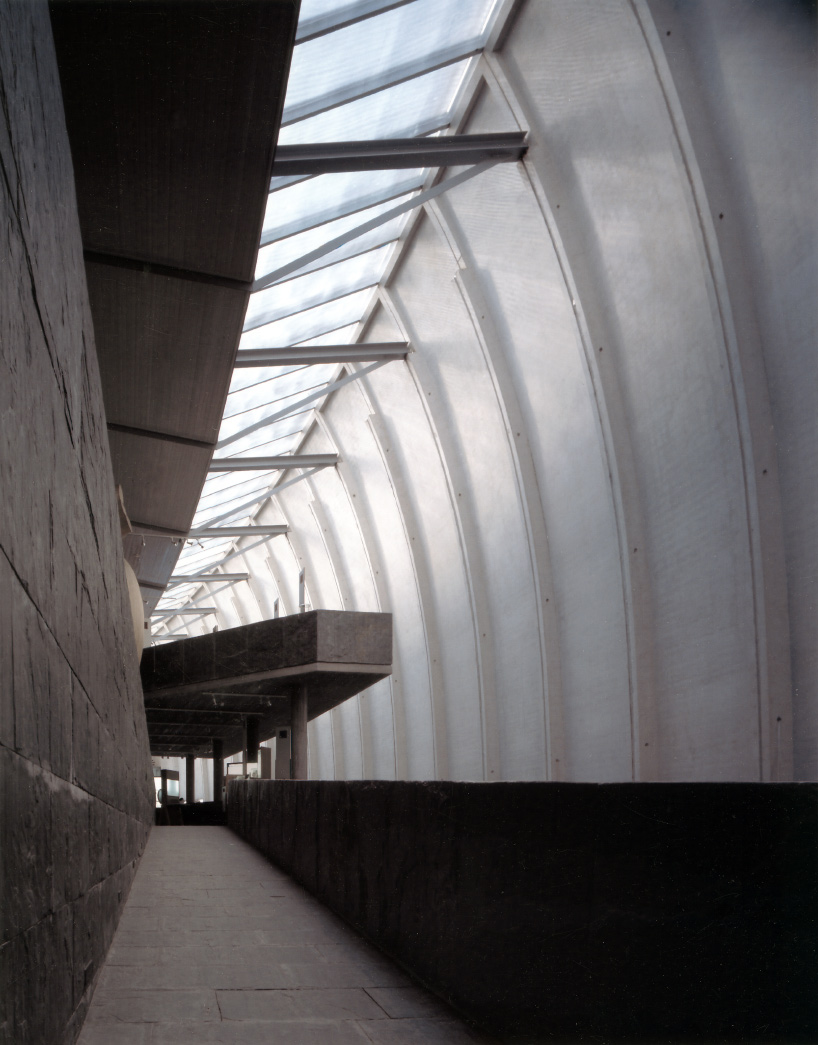
photo courtesy of hisao suzuki
ceramic park mino, gifu, japan (1996-2002)
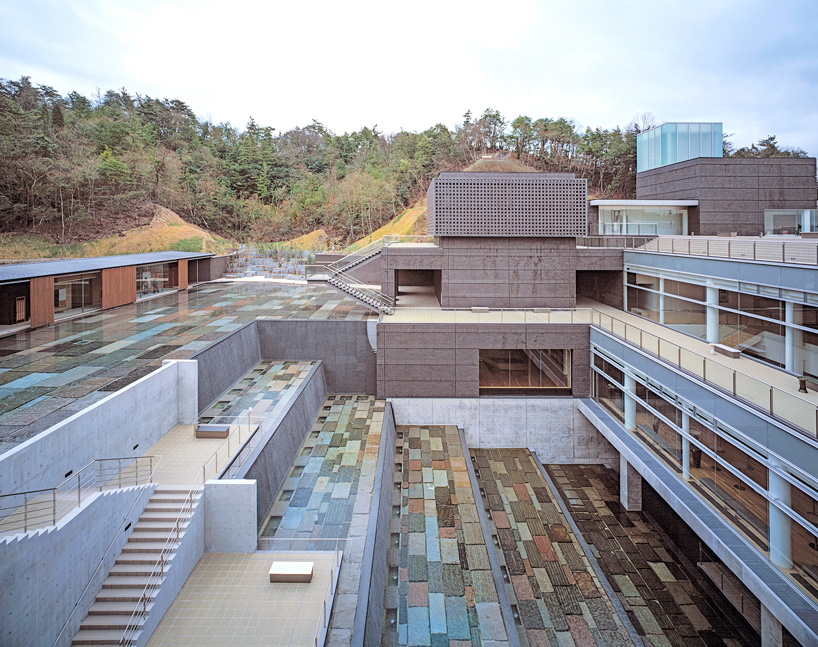
photo courtesy of hisao suzuki
this ceramics museum, which includes gallery spaces, conference halls, tea houses and a public workshop, is situated in a cascading valley. it preserves its surrounding vegetation while serving as an extension of the topography through outdoor terraces, observation decks and a glass curtain wall. two light boxes that rise up from the building hint at what lies inside. materials such as regional stoneware bricks and ceramic are used throughout, and pendulum-like structures and suspension pillars secure the galleries against the dangers of earthquakes, thus protecting the museum’s contents.
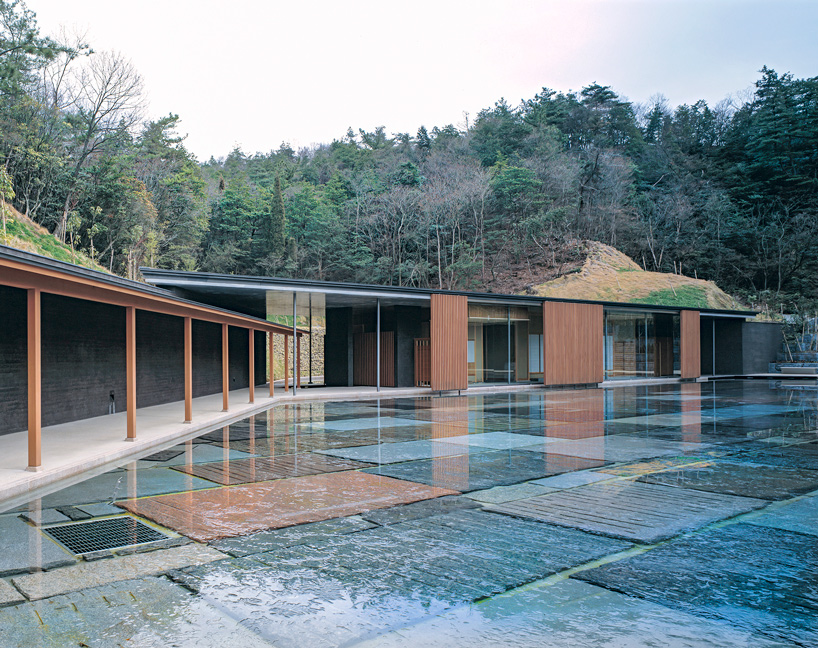
photo courtesy of hisao suzuki
allianz tower, milan, italy (2003-2014) — designed with andrea maffei
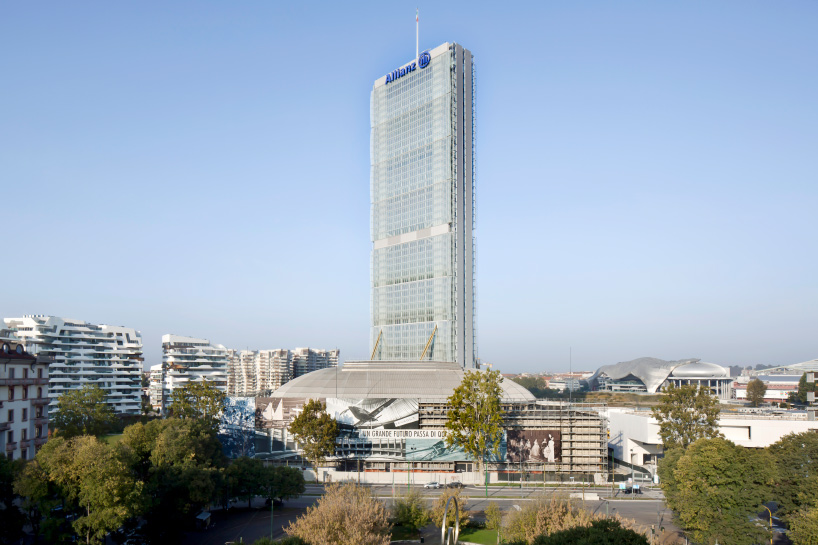
photo courtesy of alessandra chemollo
allianz tower is one of the tallest skyscrapers in italy and serves as a new landmark for the city of milan. the narrow stature of the 50-stories tall building emphasizes its verticality. the exterior triple glass curtain wall is curved in billowing six-floor sections to diminish the reflection of the sun, while showcasing the natural light that illuminates the building. this vertical succession of rounded forms creates a feeling of slight movement as the building arises. four exterior buttresses, accentuated in gold, counter oscillations, while a versatile interior structure allows for flexible office spaces. isozaki designed the project alongside italian architect andrea maffei.
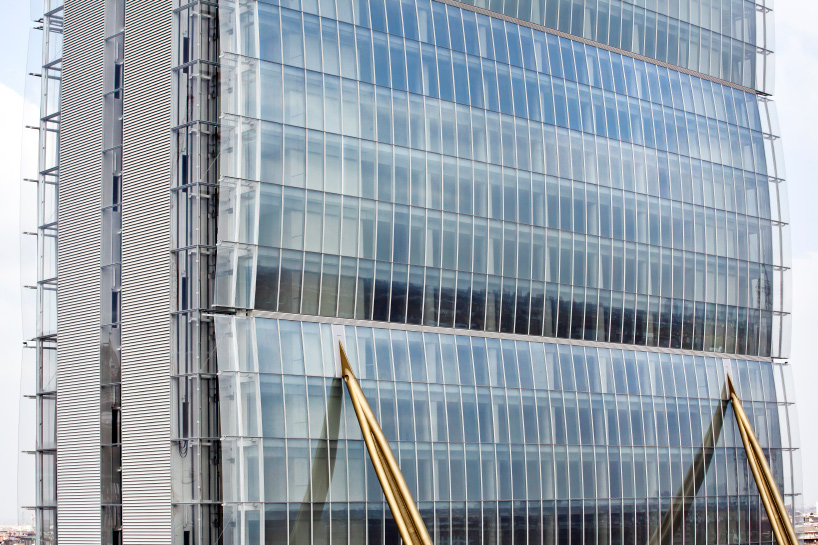
photo courtesy of alessandra chemollo
qatar national convention center, doha, qatar (2004-2011)
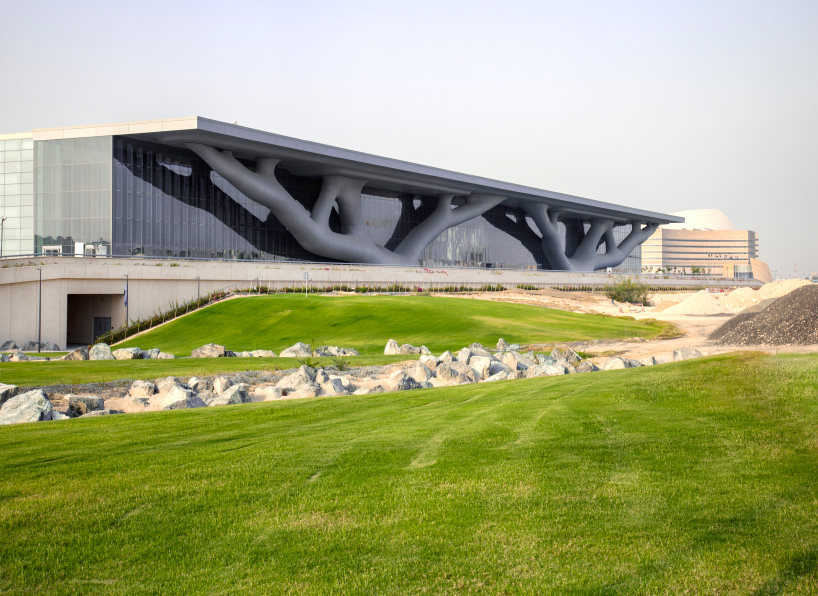
photo courtesy of hisao suzuki
as one of the largest exhibition centers in the middle east, the qatar national convention center can accommodate up to 10,000 people within its three main halls and flexible meeting spaces. the exterior evokes two trees — inspired by sidrat al-muntaha, a holy islamic tree that symbolizes the end of the seventh heaven — which surround the glass façade and support the roof canopy. using careful design and the latest techniques in water conservation and energy efficiency, the building has achieved exemplary results in terms of sustainability.
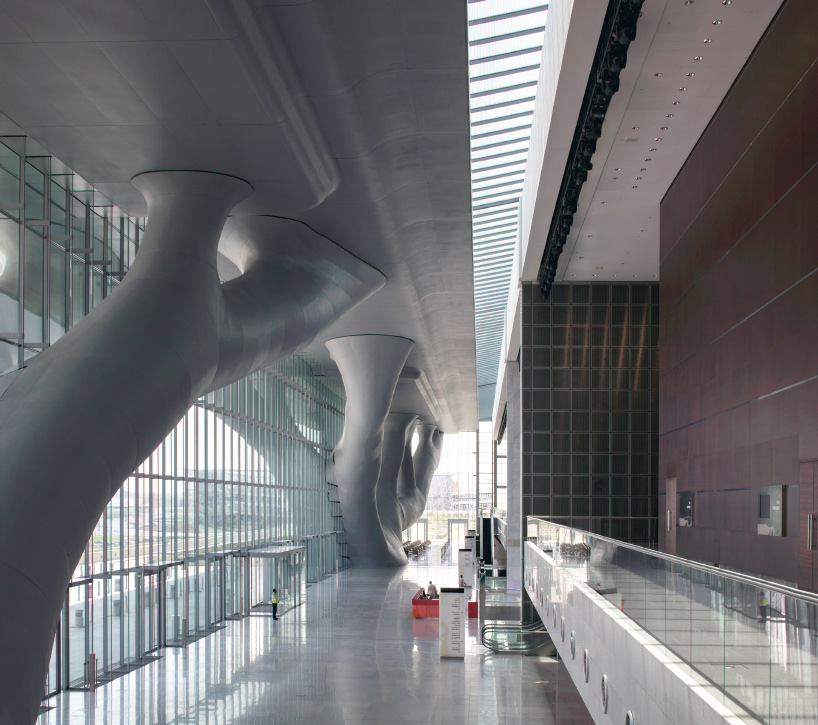
photo courtesy of hisao suzuki
shanghai symphony hall, shanghai, china (2008-2014)
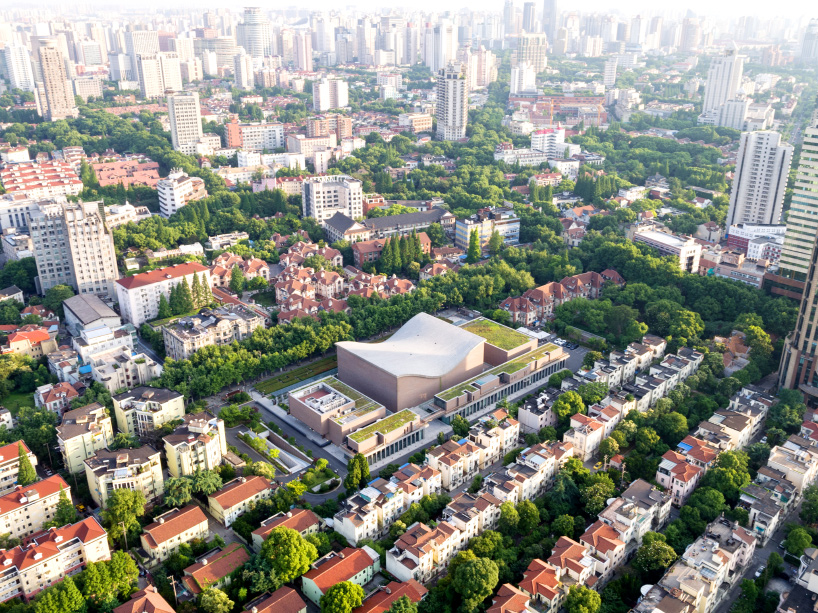
photo courtesy of chen hao
the 2014 opening of shanghai symphony hall celebrated the 135th anniversary of asia’s oldest orchestra, the shanghai symphony orchestra. in collaboration with acoustician yasuhisa toyota, the two halls seat 1,200 and 400 guests respectively, each achieving an intimate aural balance for users through the use of latest technology and sensitive materials. located in the heart of shanghai’s french concession, the performance art building sits on springs to offset the vibrations from the subway tracks below. the interior features reflector boards covered in woven bamboo and stage floors fabricated from hokkaido cypress, while terra cotta bricks and a chinese garden highlight the exterior of the building.
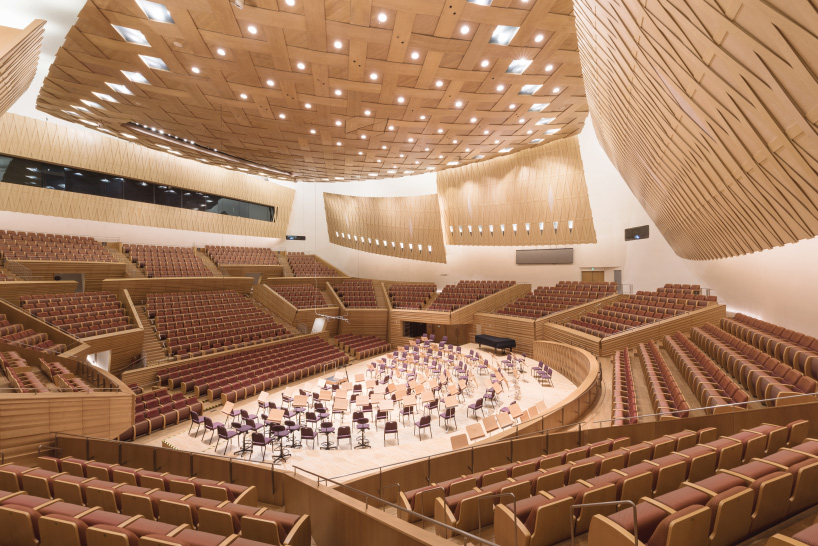
photo courtesy of chen hao
lucerne festival ark nova — designed with anish kapoor
miyagi (2011-2013, 2014), fukushima (2015), tokyo, japan (2017)
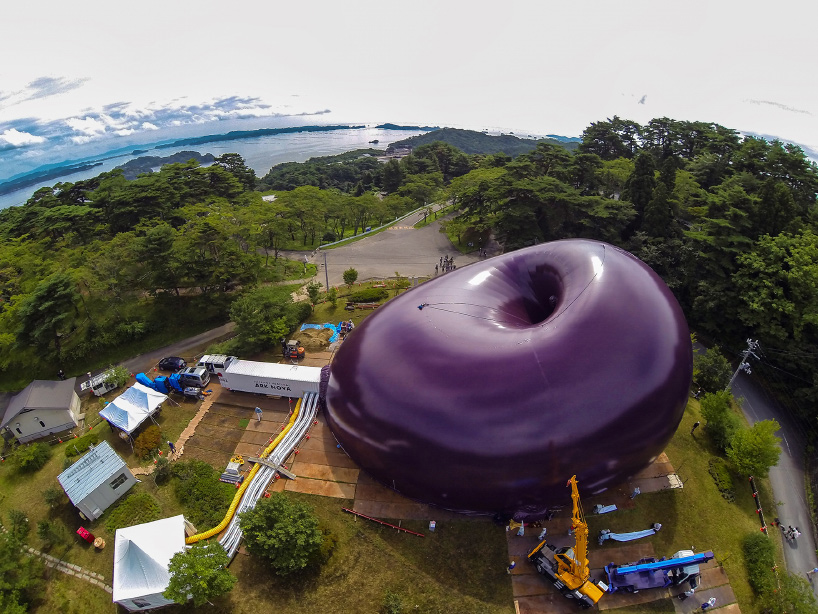
photo courtesy of iwan baan
ark nova, or ‘new ark,’ was commissioned by the lucerne festival and designed by anish kapoor and isozaki as a response to natural disaster. the PVC-coated polyester membrane of the orb-like structure inflates and deflates quickly, allowing this concert hall to be transported from one location to another, originally touring areas that were affected by the 2011 tohoku earthquake and tsunami. the inflatable mobile performance venue can showcase a range of performing arts for audiences of up to 500 guests, and has become a symbol of the spirit of rebuilding.
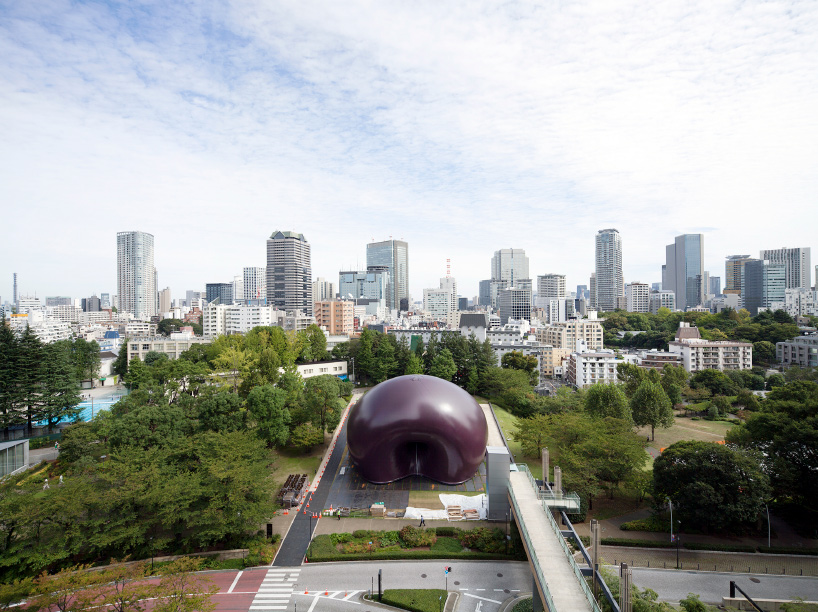
photo courtesy of iwan baan
